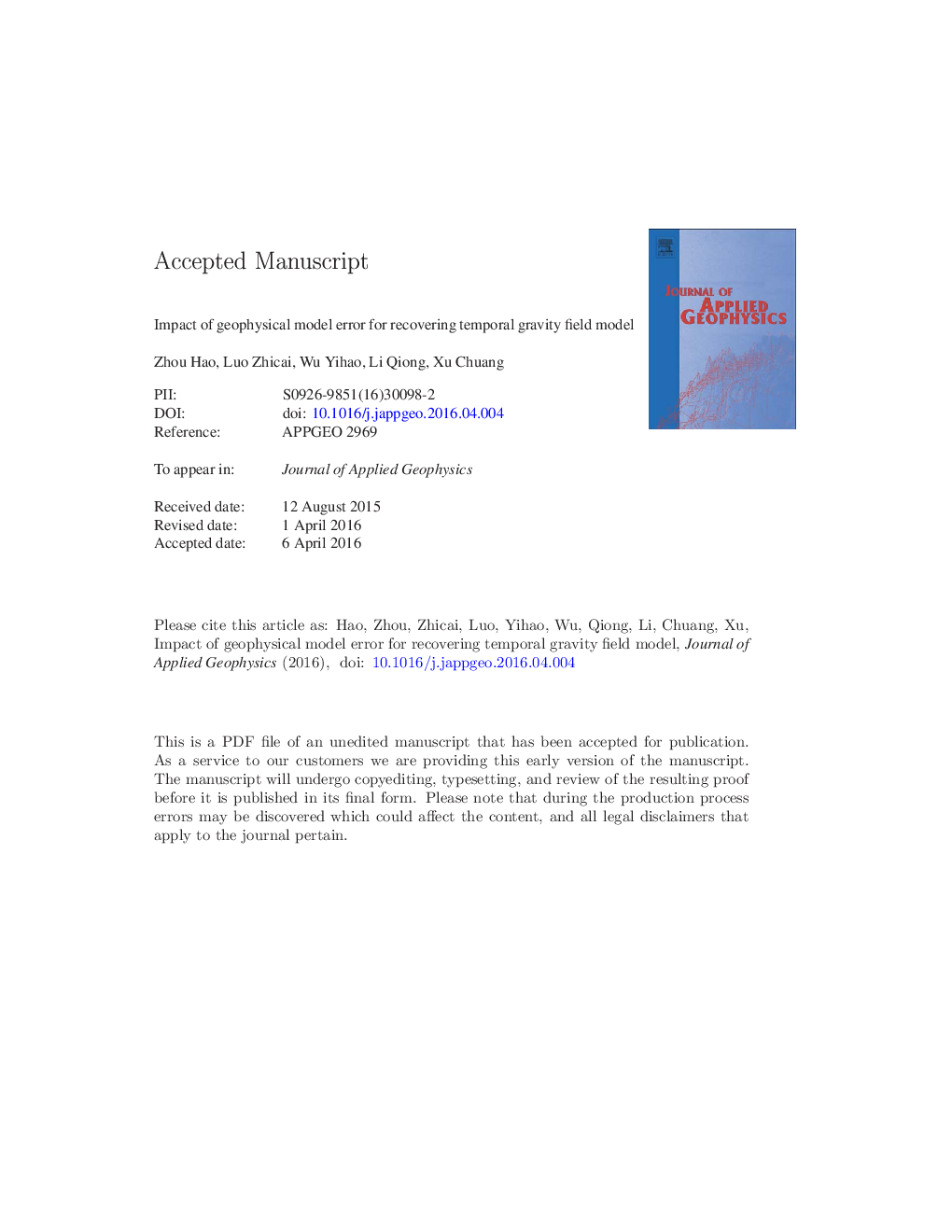| Article ID | Journal | Published Year | Pages | File Type |
|---|---|---|---|---|
| 6446971 | Journal of Applied Geophysics | 2016 | 30 Pages |
Abstract
The impact of geophysical model error on recovered temporal gravity field models with both real and simulated GRACE observations is assessed in this paper. With real GRACE observations, we build four temporal gravity field models, i.e., HUST08a, HUST11a, HUST04 and HUST05. HUST08a and HUST11a are derived from different ocean tide models (EOT08a and EOT11a), while HUST04 and HUST05 are derived from different non-tidal models (AOD RL04 and AOD RL05). The statistical result shows that the discrepancies of the annual mass variability amplitudes in six river basins between HUST08a and HUST11a models, HUST04 and HUST05 models are all smaller than 1 cm, which demonstrates that geophysical model error slightly affects the current GRACE solutions. The impact of geophysical model error for future missions with more accurate satellite ranging is also assessed by simulation. The simulation results indicate that for current mission with range rate accuracy of 2.5 Ã 10â 7 m/s, observation error is the main reason for stripe error. However, when the range rate accuracy improves to 5.0 Ã 10â 8 m/s in the future mission, geophysical model error will be the main source for stripe error, which will limit the accuracy and spatial resolution of temporal gravity model. Therefore, observation error should be the primary error source taken into account at current range rate accuracy level, while more attention should be paid to improving the accuracy of background geophysical models for the future mission.
Keywords
Related Topics
Physical Sciences and Engineering
Earth and Planetary Sciences
Geophysics
Authors
Hao Zhou, Zhicai Luo, Yihao Wu, Qiong Li, Chuang Xu,
